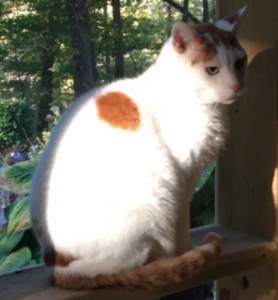Longview Pet Sitting – This article was originally published 8/1/2016.
Cats have worked as the world’s fuzzy exterminators since at least 8000 B. C. when the Natufians, the first human farmers, utilized the skills of their furry friends to rid rodents from stored grain. Cats need little light to hunt due to their agility and nocturnal nature. With rodents being nocturnal as well, cats soon became their perfect nemesis. Cats have worked as rat catchers on ships during World War II, in New York bodegas and even at 10 Downing Street protecting the prime minister.
Today this feline skill is still being utilized throughout the world and the United States. CNN recently reported on the innovative approach to rat control being employed by Tree House Humane Society in Chicago. In 1971 Tree House became the country’s first cageless no kill cat shelter and although most of the animals they rescue are highly adoptable, some wild cats never make good pets. Prior to a 2007 ordinance, the city’s animal control would have to kill those cats. Now, the Managed Care of Feral Cats Act allows animal organizations like Tree House to trap, neuter and return cats to their home turf. Tree House manages 650 colonies with 3,600 cats. Unfortunately, due to threats in their original territory, a few cannot be returned. Accordingly, Tree House crafted an initiative to put those cats to work.
Five years ago Tree House started the Cats at Work project to aid local businesses and residents with the growing rat infestation problem in Chicago by transplanting these misfit cat colonies to areas that need help. The project does take some work as it is not as simple as just dropping off the cat colonies in a new neighborhood. It takes about four weeks to acclimate the cats to each other and their new territory. The process consists of converting giant dog crates into kitty apartments with a litter box, scratching post, toys and shelter to protect them from the rain. A caretaker feeds them twice daily. Once the colony is comfortable in their new environment, they are able to go about the business of expelling rats.
Although the cats may kill off a lot of the rat population by eating the rats, simply their presence acts as a deterrent. The scent of cats marking their territory with urine and rubbing against things is enough to keep rats away. The areas of Chicago that have utilized Tree House’s Cats at Work program have found that it is the only long-term permanent solution that is nearly 100% effective at rodent control.


